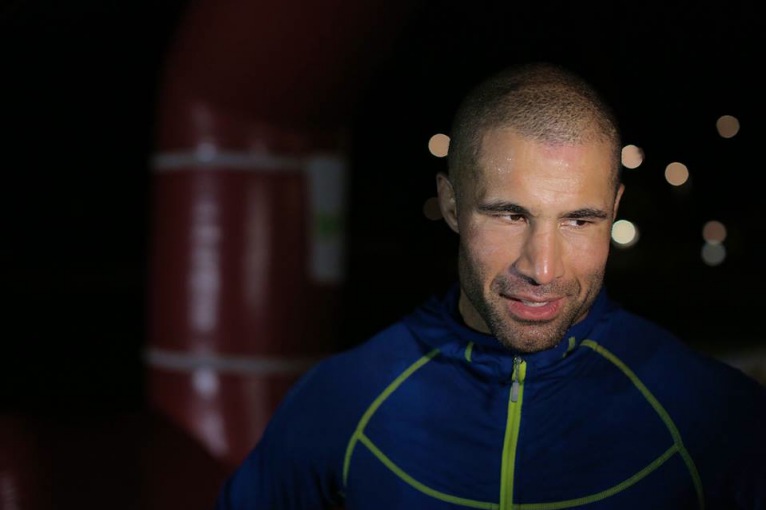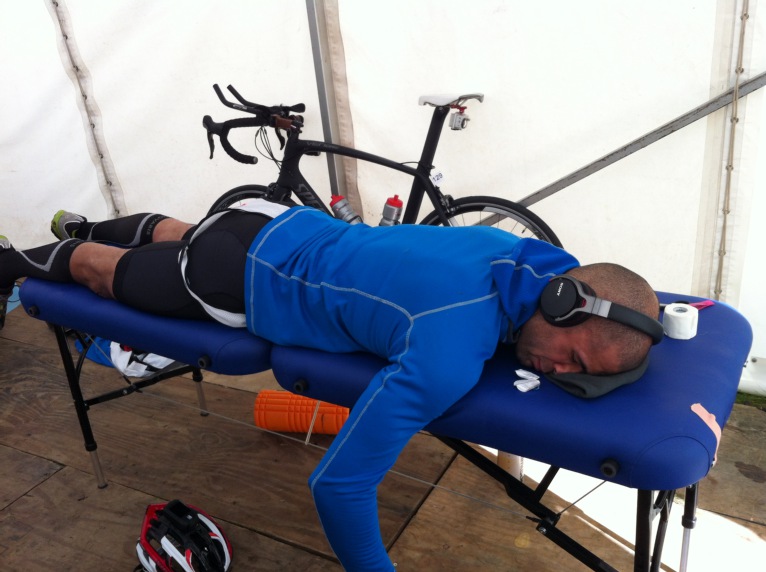Episode 3 preview - The Brutal
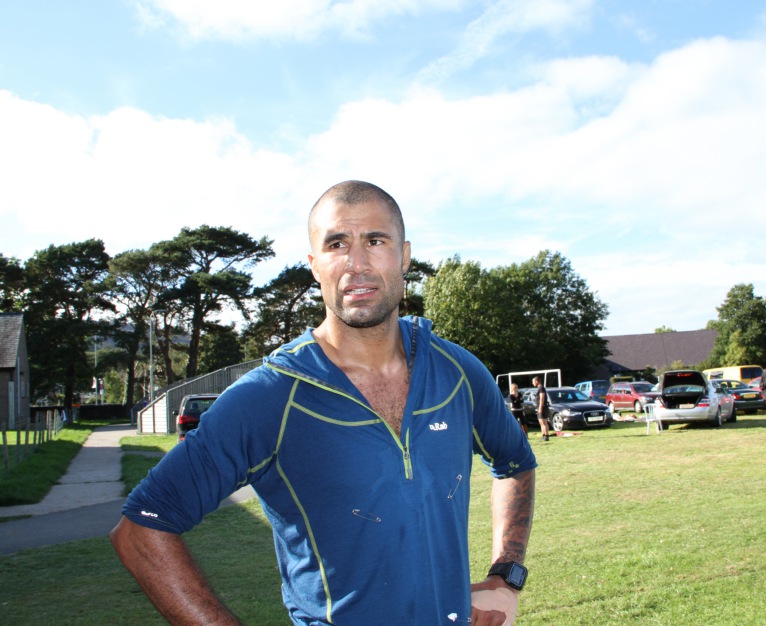
Ahead of tonight’s third episode of Xtreme Endurance: Race to the Pole at 7pm on Channel 5, Richard talks about taking on Snowdonia’s gruelling ironman race – The Brutal.
You took part in the Brutal just a few weeks before you left for Antarctica. Whilst most other athletes would be tapering down before a big event, you took part in a double ironman, why?
The Brutal was that very last line in the sand before I left for Antarctica. So much of Antarctica was going to be a psychological challenge of what I was capable of enduring, so I had picked the double brutal as the perfect final event of that brutal year and the culmination of 18 months of preparation.
All the pieces of the jigsaw I had worked on throughout the year from prehabilitation, functional strength, biomechanics, fuelling strategies to pacing strategies, all got pulled together in this one epic event.
In the past I have done deprivation training sessions like 24-hour climbs, however I chose the double brutal as preparation as I knew it would be one of the few events which would take me over the 30-hour mark. Pushing myself for that period of time, meant that should for any reason in Antarctica I needed to push myself for 17/18/19 hours, I would be within my comfort zone and avoid the risk of not operating safely due to mental fatigue.
You also had the chance to work on some new psychological coping strategies…
Nic (my physio) had highlighted that psychologically I was strong at some things but I did have some weaknesses. So I began working with a sports psychologist Cath Shearer from Sport Wales at associative coping strategies for Antarctica.
I had proven to be very good at dissociative strategies - in layman’s terms, psychologically disengaging from the situation, thinking about other things. That can be really powerful in some situations and often at the beginning of expeditions, but it comes to a point when it becomes counter productive and my performance would drop, normally about three quarters of the way through events or expeds. So having a balance of those dissociative strategies with associative ones was vital. Associative means staying in the moment, trying to focus on the processes. This was going to be really powerful in Antarctica, so the brutal was the opportunity for me to proactively practice these skills.
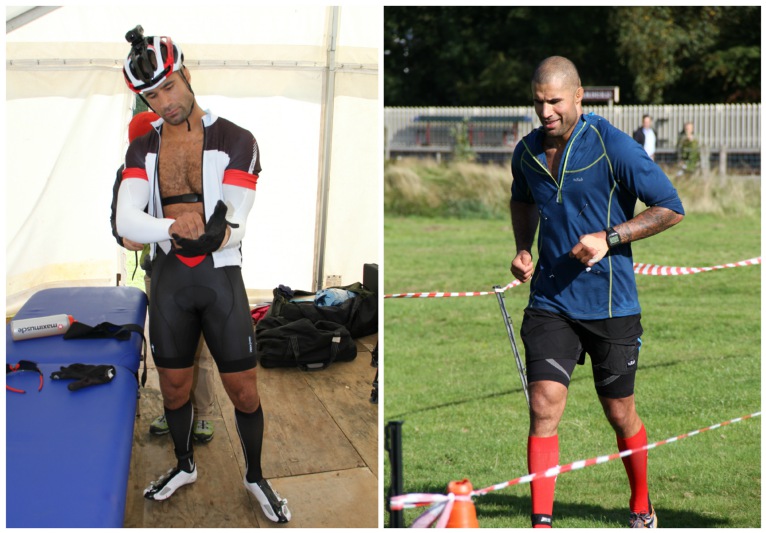
Viewers see you go on a bit of an emotional rollercoaster once again this week!
I did go on a physical, psychological and emotional journey throughout the event. The nature of an event like that is that you do go through many rooms in your mind, and have to manage the constant inner dialogue between my body’s self protective instinct to stop and my mind’s desire to keep going. The battle is overriding your body.
What was really revealing for me though was that for the first time after spending the best part of 30 odd hours with my mind over ruling my body’s self protective instinct, actually I got to a place where the dialogue was reversed and my mind started to think I couldn’t carry on but my body was and could. It was an incredible experience, which proved so much more valuable than I thought it would be.
It was a risky strategy though, taking on this event so close to leaving for Antarctica?
Every single session with Nic, every single minute of prehab, rehab, functional work, every training session all came to play in this.
Let’s make no bones about it – this was an incredibly risky strategy. From a pure performance point of view, this was insane. Not many high performance athletes would’ve have put themselves through such a brutal and risky training session so close to their main objective. The risk of injury was extremely high. Nic and I spent many nights talking how we would manage this against the benefits of taking part. It went against a lot of the high performance principals that Nic had operated under, however she knows me very well and she knew the importance of the psychological element of this event, which ultimately outweighed the physical risks. But it was a big risk. Had I have broken down, torn a muscle, got injured, fallen off the bike, twisted an ankle with fatigue, it would have potentially meant my Antarctica World Speed Record attempt was over. It could have been catastrophic.
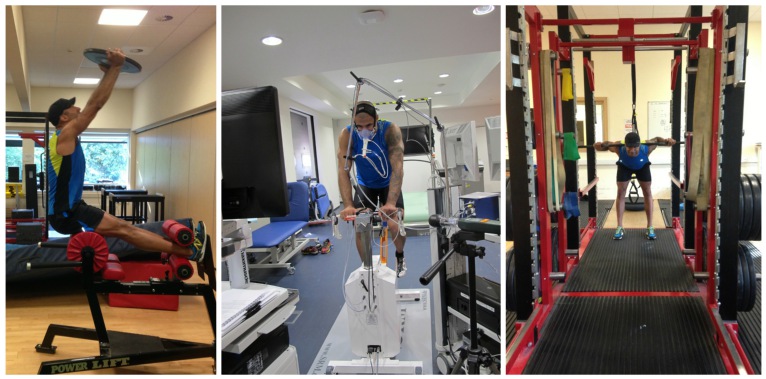
Richard training at Sport Wales and testing at the GSK Human Performance Lab
It was also counter productive to the training adaptation phase I was in. Coming back from the Antarctica R&D exped in January, I had lost over 16kg in bodyweight and we had highlighted this as real threat to the Antarctica Speed Record exped. I had worked really hard with my nutrition team at the GSK Human Performance Lab, with my food sponsor Fuizion and in my training plans to limit this deficit moving forward. I knew I was going be in a huge calorific deficit in Antarctica. So the way to combat that was to put on the extra 12-15kg of bodyweight knowing I would lose it throughout the expedition. However for a double ironman I was pretty heavy.
In other words, you were a beast?!
In some movements I was the strongest I had ever been in my life. I was dead lifting 198kg, more than I was throughout my professional rugby career. I was 13kg heavier than I was in the Jungle Ultra marathon race in Peru. My focus was Antarctica, not the Double Brutal. This was purely a training event, which gave me the opportunity to dip in to the psychological places that I hadn’t gone in to during the other events. It was hugely successful, but a massive risk.
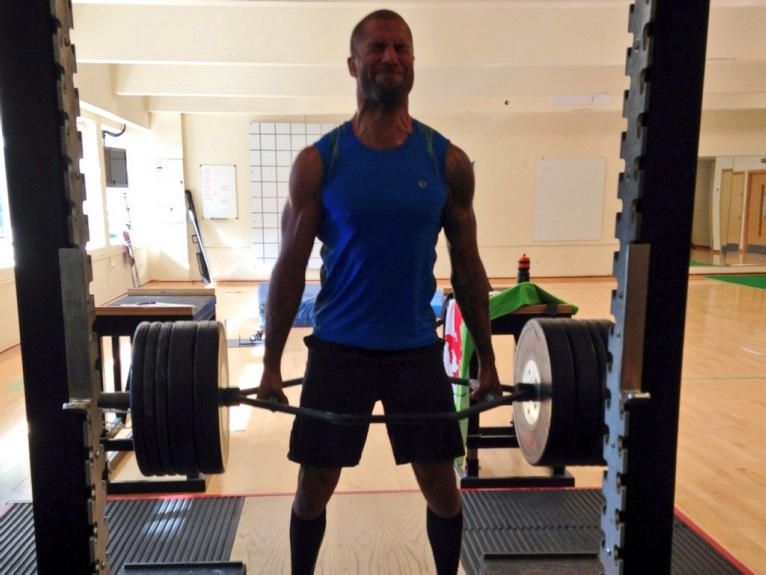
Were you nervous about the race?
I wasn’t nervous, as I am not a triathlete and wasn’t going there to compete with other triathletes. Some of the other athletes were at the top of triathlete endurance. The challenge for me was to push myself through physical exertion for over 30 hours and use it as a tool psychologically.
I had broken my hand training a few weeks before the event so I couldn’t enter the swim, so any pressure to live up to the ironman status was taken off me. Although there was part of the competitive me that was gutted, I was using the event for quite specific objectives and had to keep that in mind. I was really grateful to the event organiser and competitors to allow me to use the event as a very valuable and powerful training session.
Fuelling plays such an important part in ironman races, what strategy did you take?
The fuelling strategies I worked on throughout the year with the guys at GSK Human Performance lab worked really well in this event. A big factor in my ability to be able to pull myself back from miscalculating the first half of the bike section was down to my fuelling strategy, and that gave me huge confidence and satisfaction. Together with GSK I had calculated every gram of carbohydrate and every calorie that I would need whilst exercising at my planned level. My ability to recover from my epic bonk on the bike confirmed that my strategy was spot on. It gave me a load of confidence and played a really big part in not just the food Fuizion made for me for Antarctica, but the timings and how I took fuel on throughout the day in Antarctica.
When I started the lap section of the race I was at a place where I had to run similar lap times of the runners at the front of the event and they were lapping at about 1hr 15 min around the lake. At this point everything was suggesting that I wasn’t going to finish the race, but every lap that I ticked off at around an hour and a quarter gave me huge confidence. This 1hr 15min number actually formed the backbone of everything I did in Antarctica. Physiologically that was the timeframe that suited me best. In Antarctica my days were structured around 1hr15 min ski blocks with a 5 minute break and I would do 8-10 of these a day. That strategy all came from the Brutal and played the biggest part in my ability to cover the 1,150km in such a fast time.
For once your family and girlfriend were able to support you, did having them there make a difference?
It was awesome to have some of the people I care about there supporting me. So often I am training or preparing on my own, so for them to get a slight insight in to the levels I was going to in order to prepare for Antarctica was a really positive thing. I think that it gave them confidence in my meticulous preparation. On the rules of the race it states you are allowed, and recommended, to have a support crew with you. In the build up I had steered away from this, however, I simply don’t think I would have got through it had I not had the support form Nic, my mum and dad and Amy.
I am not a selfish person but there is an element of what I do in extreme environments like Antarctica that was putting a huge amount of strain on the people around me, from worry to the danger etc. So involving those people in my preparation meant a lot to me, and to them. It also made it a much more enjoyable experience. Actually I would still be probably stuck in the shower at the B&B I was staying in if it wasn’t for Amy! When I finished that night I decided to have shower after the event and I was so wrecked that I didn’t have the strength to stand back up after I sat down! So if she wasn’t there I probably would have never got back up!
My mum and dad have supported me throughout my rugby career, they have travelled all over the world to watch me play. They can’t climb mountains with me so it meant a lot to me having them there. I had a real surreal moment on the final lap too; I talk about this moment seeing my Dad on this epic lap in my book Beyond the Horizon. I will never forget it; it brought a tear to my eye.
Worst Moment
The cycling part was er interesting! One of the challenges with filming these events that not many people would see was that I was riding my beautiful Specialized Venge speed machine which weighed very little, but the camera rig for the infrared camera almost doubled the weight of that bike – the filming in the night was one of the toughest parts! Which leads me to my worst moment!...The lap that I feel asleep on was the worst, you’ll see all this in HD tonight! I had over cooked the first few laps on the bike and absolutely bonked! I had emptied myself and was in a world of pain, but even that mistake was a valuable lesson in pacing strategies for Antarctica. Also the psychological confidence it gave me, to know I can empty myself to that level but still recover whilst I continue to pull it back was so powerful. To get off the bike in the state I was in, and to pull back the two marathons at the pace I did, surprised me as much as it surprised everyone else I think.
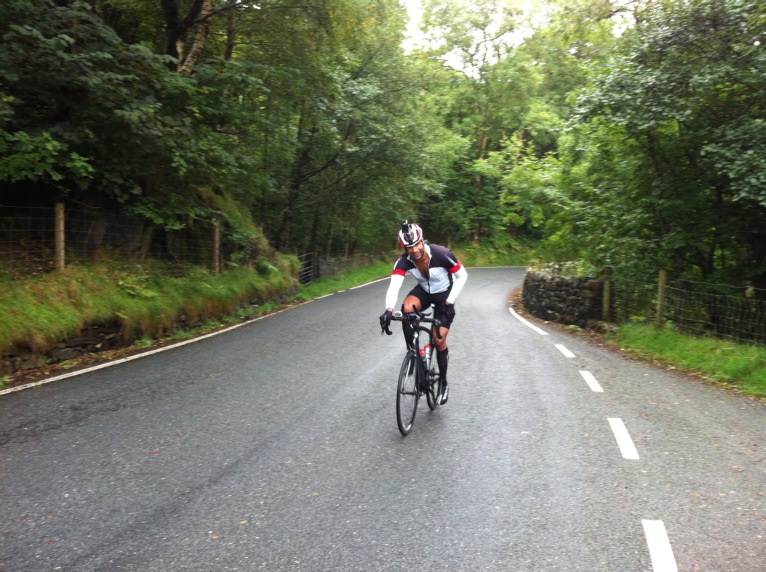
Best Moment
The last lap of the run. I felt like everything had come together at that point. I had been going non-stop for 36 hours. The race organisers had put the pressure on me that I was getting close to the cut off point - which I didn’t respond to well at the time! I had to deliver…and to run the last lap without the camera crew, without self-filming, just on my own in the forest listening to my body was genuinely a euphoric moment. I talk a lot about this last lap and the feeling it gave me in my book as well.
I was absolutely empty and all I could focus on was the 10 metres in front of me. By this point I had learnt the route of the lap inside out. All I could focus on was getting to that bench, to that tree, to that line in the road etc. It was exactly the type of associative training that I needed, all those 10 metres added up. That last lap is why I push myself to the levels that I do, it transcends achievement into something spiritual.
